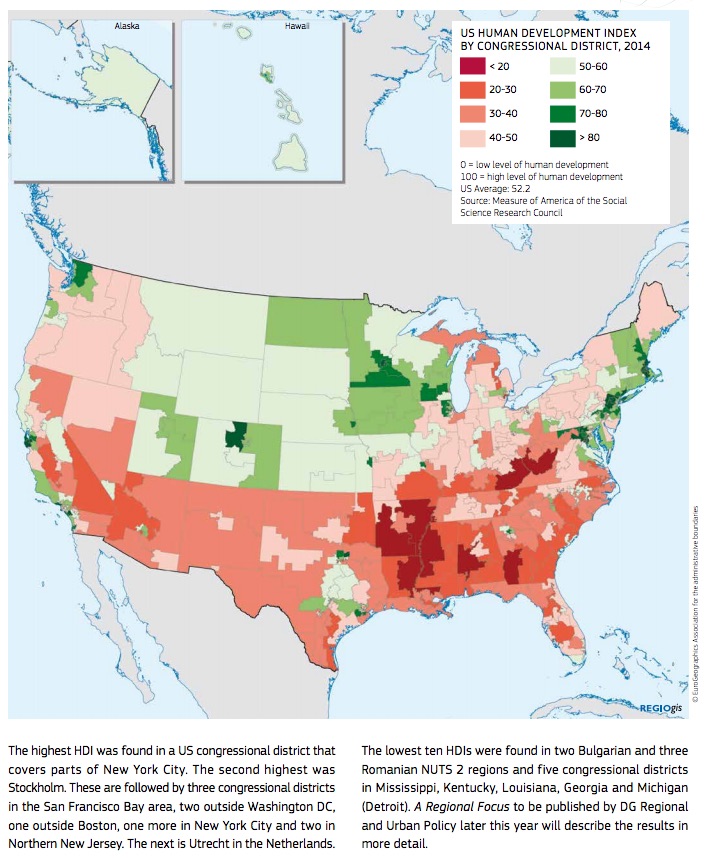This article was translated by John R. Bopp
Our day-to-day life can oftentimes keep us from seeing problems with the proper perspective, because our day-to-day life has the bad habit of tying us up in matters that force us to focus on the here and now.
Of course, the here and now need to be taken care of, too, but sometimes it’s good to come up for air and get an overview of things, since that helps us know if those short-term actions are going to take us down the road we’d like to go down long term.
So, how should we go about doing that? The summer issue of Panorama, published by the European Commission (Regional and Urban Policy) just offered us a great way of getting a general overview, comparing the US and the EU, as well as where we Basques are in that area.
It did so by analyzing the Human Development Index (HDI) of the regions that make up the European Union, as well as the congressional districts of the US.
The truth is, those two charts are illuminating, and they tell us a lot.
- They tell us about the domestic situation in European and the US, and their inequalities.
- They also tell us about the comparative situation between both societies.
- They also let us know what the overall Basque situation is.
Regarding the first item, it seems worrying that a society, the most developed in the world, and “unified” in a single political identity for so long, as is the case of the US, would have such large inequalities that would affect so much territory. The green areas, which mark a higher HDI, are much fewer and further between in the US than in Europe.
Europe, also, clearly shows the scars and social inequalities that were marked by the different stages of European integration. But it also shows the weakness of southern Europe, where, despite the constant and very large influx of cash for many years, has not been able to develop a productive economy that benefits its citizens.
The US/EU comparison is enlightening, since it shows that even with all its defects, Europe is maintaining a situation that could be described as the least unequal, putting it in a relatively better position.
As for the Land of the Basques, there are several interesting things to note on this map:
- The more self-government, the more development, and the more equality. If we could see this same map with data from thirty years ago, neither the Basque Autonomous Community nor Navarre would be where they are, and they would be far behind the situation in the Northern Basque Country. Thirty years later, the increase in self-government has shifted the balance. It’s no wonder the Basques north of the Pyrenees are getting more and more riled up about recovering their self-government, even if it’s only in part.
- We’re not at the head. Guillermo Dorronsoro told us quite a while ago, when he showed us a map of innovation in Europe (which is very similar in structure to this HDI map). We’re in a respectable second level in the case of the Basques north of the Pyrenees, and in a third level in the case of those south. The question is, are we going to settle for that. In our own case, NO.
We’ll leave you with issue number 53 of Panorama, where you can find these maps on pages 32-33.
Last Updated on Dec 20, 2020 by About Basque Country































